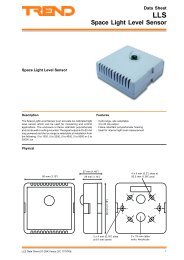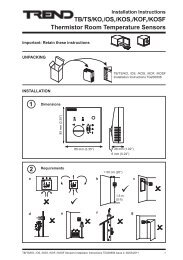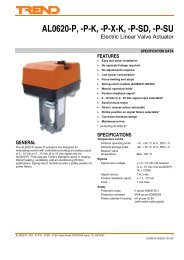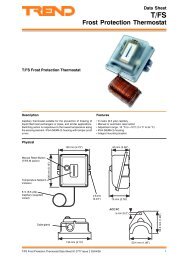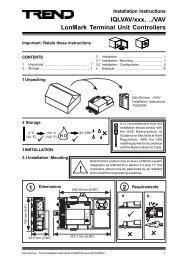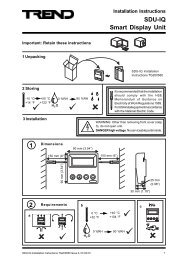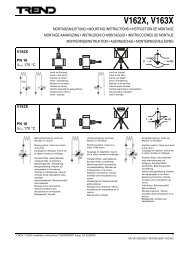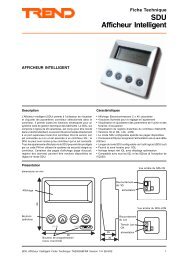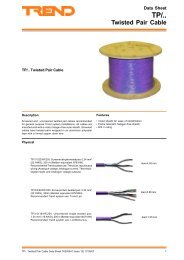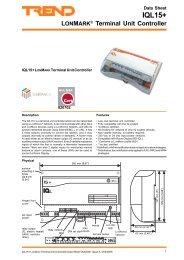Installation/startup instruction (English) - PNet - Trend
Installation/startup instruction (English) - PNet - Trend
Installation/startup instruction (English) - PNet - Trend
- No tags were found...
You also want an ePaper? Increase the reach of your titles
YUMPU automatically turns print PDFs into web optimized ePapers that Google loves.
Configure the IQ3/XNC MODBUS Driver6 Configure the IQ3/XNC MODBUS DriverConfiguration of the IQ3/XNC MODBUS Driver can be broken down into the following steps:Select the DriverAdd the Driver to the IQ3/XNCConfigure the Driver’s Communication SettingsConfigure Device DetailsConfigure Output Labels6.1 Select the DriverThe driver is available with two different communications options (TCP/IP, and serial) and in two different sizes.The variants are functionally the same, the only difference is the communications method, the number inputs, andthe number of BrIQs required in the IQ3/XNC.Communications Option Data Requests Inputs Outputs BrIQs Required FilenameIP 35 20 85 10005 XactTCPIPModbusClient.XNC185 150 400 12980 TCPIPModbusClient.XNCSerial 35 20 85 9565 XactSerialModbusMaster.XNC185 150 400 12540 SerialModbusMaster.XNCWhen deciding which variant of the driver to use you should consider the following:Communication optionNumber of devices and outputs requiredDriver and strategy sizeCommunication optionDecide which communications option is required (TCP/IP or serial). This depends on the type of converter used tomake the connection between the IQ3/XNC and the MODBUS.Number of data request, inputs and outputs requiredConsider the data requests, number inputs, and number of outputs that are required and pick a variant of the driverthat provides the required level of support.The number of data requests determines the number of different requests for information that can be set up. Each datarequest could request information from several sequential values. Each data request is configured in one of the TCLinterface module’s stores therefore the number of data requests is the number of stores available for this purpose.Information can be written to or read from more actual points than the number of data requests available for thedriver as each request may read/write more than one value.When considering the number of outputs required you should ensure that the selected driver variant has enoughoutputs for one output per value that is to be read. Remember that a data request that reads 5 values will write theresults into 5 consecutive outputs.When considering the number of inputs required you should ensure that the selected driver variant has enough inputsfor one input per value that is to be written. Remember that a data request that writes 4 values will obtain the valuesto write from 4 consecutive inputs.Note that the total number of inputs and outputs cannot exceed the limit for the driver.Driver and strategy sizeAs different variants of the IQ3/XNC have a different number of BrIQs available for use for the driver and strategyyou must also consider the number of BrIQs required for the driver, and any strategy that is required. If most of theIQ3/XNC’s BrIQs are used by the driver there may not be enough available for the strategy. In this case you shouldconsider using the smaller version of the driver with several IQ3/XNCs, or use an IQ3/XNC with a higher BrIQ count.IQ3/XNC MODBUS Driver Manual TE201101 Issue 2, 12-Apr-201119



